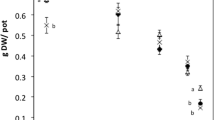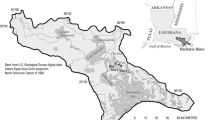Abstract
Few studies have experimentally investigated the influence of competition for light on structure and composition of wetland vascular plant communities, despite the well-documented high productivity in such systems. Influences of the dominant emergent wetland plant Juncus effusus on the surrounding macrophyte community were evaluated in a shallow freshwater wetland through two consecutive growing seasons. Permanent transects were constructed along diagonals of randomly oriented 1 m2 plots centered around isolated, colonizing J. effusus tussocks. Percent areal cover was measured for each species or identifiable taxon group in 400 cm2 sub-plots centered 10, 20, 30, and 40 cm from the tussock edge, to evaluate species richness, diversity, and dominance indices. Observational studies during the first growing season indicated that plots having larger, more heavily shading tussocks yielded significantly lower cover and species richness in the surrounding plant community than less shaded plots. Shading by J. effusus was reduced experimentally during the second growing season by holding culms in a vertical position in half of the J. effusus-occupied study plots in order to assess directly the influence of shading by J. effusus. Manipulated plots became more diverse and species-rich and developed higher total percent areal cover. Within shaded reference plots, reductions in cover, richness, and diversity were correlated with intensity of shading; each of these measures was lowest in sub-plots centered 10 cm from the tussock, where measured light reduction was highest. Neighborhood analyses of biomass, species composition, and light reduction indicated that individual species biomass varied with distance from J. effusus tussocks and shading intensity, an indication of the potential for shifts in community composition as populations of this dominant macrophyte expand to fill a wetland area. A mathematical model is presented to illustrate shading effects of J. effusus as a population grows from isolated, colonizing tussocks to an interacting system of tussocks in an established population of this dominant macrophyte.
Similar content being viewed by others
Author information
Authors and Affiliations
Additional information
Electronic Publication
Rights and permissions
About this article
Cite this article
Ervin, G.N., Wetzel, R.G. Influence of a dominant macrophyte, Juncus effusus, on wetland plant species richness, diversity, and community composition. Oecologia 130, 626–636 (2002). https://doi.org/10.1007/s00442-001-0844-x
Received:
Accepted:
Published:
Issue Date:
DOI: https://doi.org/10.1007/s00442-001-0844-x




